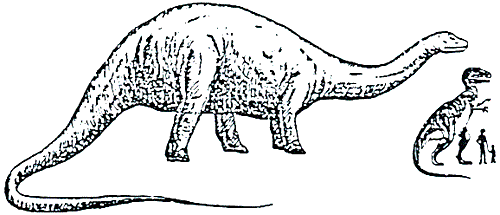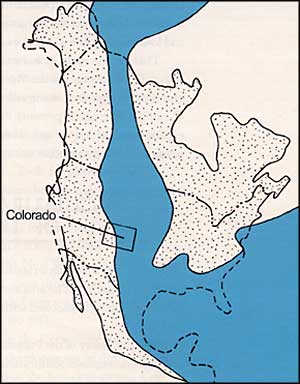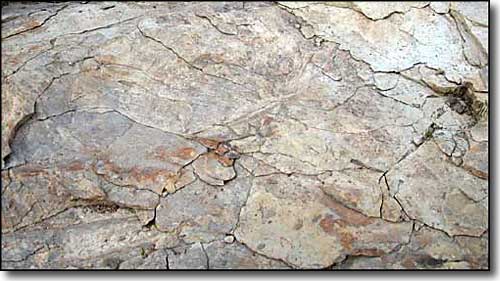
Dinosaur Lake-Picketwire Canyonlands
Identifying the Track Makers


The Cretaceous Western Interior Seaway
Courtesy University of Colorado Dinosaur Tracking Exhibit
40% of the tracks were left by Brontosaurs, massive four-footed plant eaters. Among the several dozen trackways at the Purgatoire Tracksite, a relatively large, broad-footed, narrow-gauge trackmaker and a relatively small, narrow-footed, narrow gauge trackmaker have been identified, suggesting that these two different dinosaur species account for nearly all of the Brontosaur tracks found here. Or, rather than two different species, they may also represent different age groups and different sexes within the same species. Parallel trackways indicate that several smaller Brontosaurs were travelling as a group heading west along the shoreline of the old lake. This evidence of social behavior among young Brontosaurs is the first of its kind from the Morrison Formation.
60% of the tracks were left by bipedal animals with three-toed footprints. Such tracks are usually attributed to either the carnivorous theropods or the herbivorous ornithopods. The Purgatoire Tracksite is known for quite a few different three-toed track types, ranging in size from about 6 inches to about 18 inches in length.

A palm frond pressed by dinosaur feet molded into a trace fossil
found in sandstone along the river bed.
